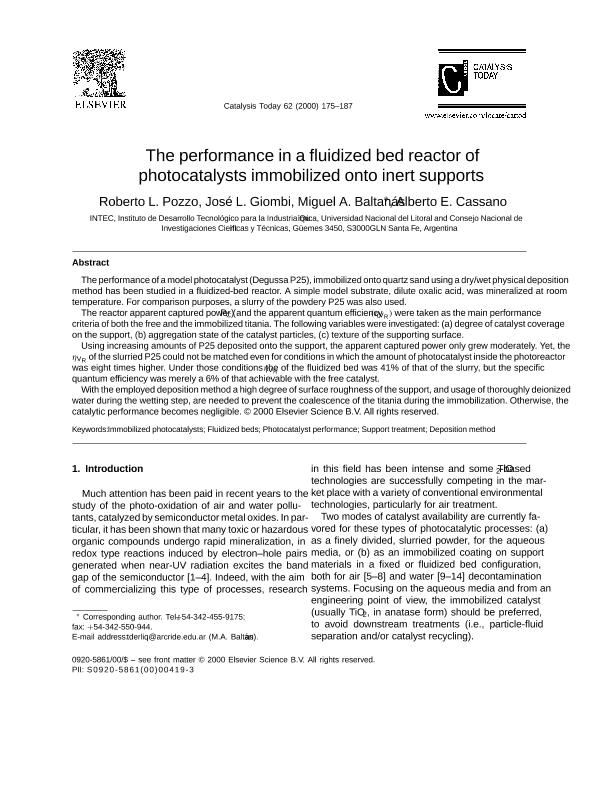Artículo
Performance in a fluidized bed reactor of photocatalysts immobilized onto inert supports
Fecha de publicación:
05/2000
Editorial:
Elsevier Science
Revista:
Catalysis Today
ISSN:
0920-5861
Idioma:
Inglés
Tipo de recurso:
Artículo publicado
Clasificación temática:
Resumen
The performance of amodel photocatalyst (Degussa P25), immobilized onto quartz sand using a dry/wet physical deposition method has been studied in a fluidized-bed reactor. A simple model substrate, dilute oxalic acid, was mineralized at room temperature. For comparison purposes, a slurry of the powdery P25 was also used.The reactor apparent captured power (PC) and the apparent quantum efficiency .VR / were taken as the main performance criteria of both the free and the immobilized titania. The following variables were investigated: (a) degree of catalyst coverage on the support, (b) aggregation state of the catalyst particles, (c) texture of the supporting surface.Using increasing amounts of P25 deposited onto the support, the apparent captured power only grew moderately. Yet, the VR of the slurried P25 could not be matched even for conditions in which the amount of photocatalyst inside the photoreactor was eight times higher. Under those conditions the VR of the fluidized bed was 41% of that of the slurry, but the specific quantum efficiency was merely a 6% of that achievable with the free catalyst.With the employed deposition method a high degree of surface roughness of the support, and usage of thoroughly deionized water during the wetting step, are needed to prevent the coalescence of the titania during the immobilization. Otherwise, the catalytic performance becomes negligible.
Archivos asociados
Licencia
Identificadores
Colecciones
Articulos(INTEC)
Articulos de INST.DE DES.TECNOL.PARA LA IND.QUIMICA (I)
Articulos de INST.DE DES.TECNOL.PARA LA IND.QUIMICA (I)
Citación
Pozzo, Roberto Luis; Giombi, Jose Luis; Baltanas, Miguel Angel; Cassano, Alberto Enrique; Performance in a fluidized bed reactor of photocatalysts immobilized onto inert supports; Elsevier Science; Catalysis Today; 62; 2-3; 5-2000; 175-187
Compartir
Altmétricas




